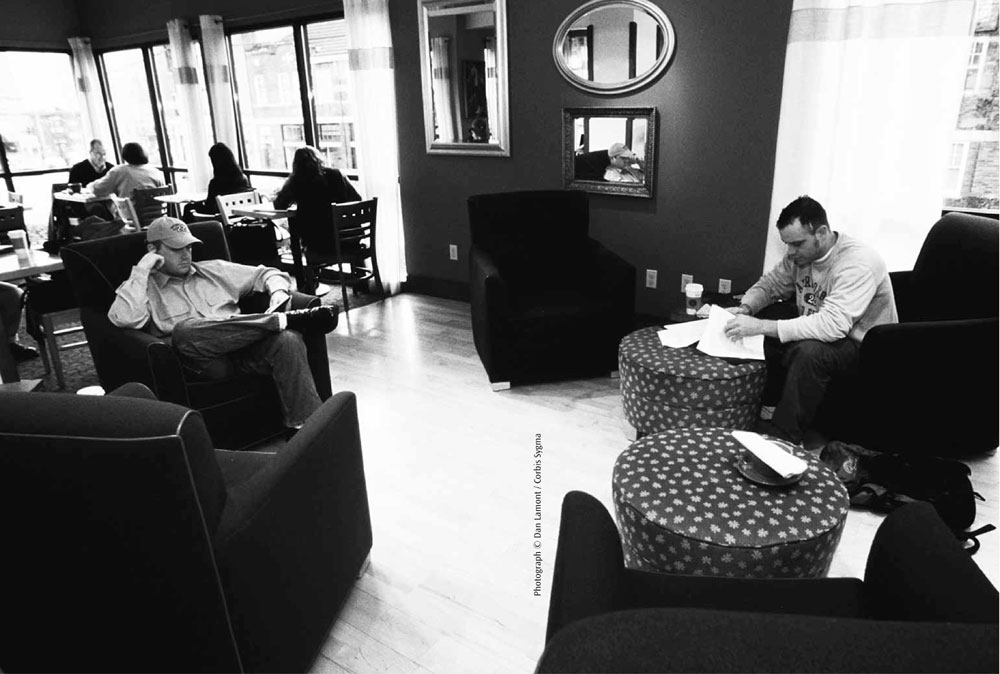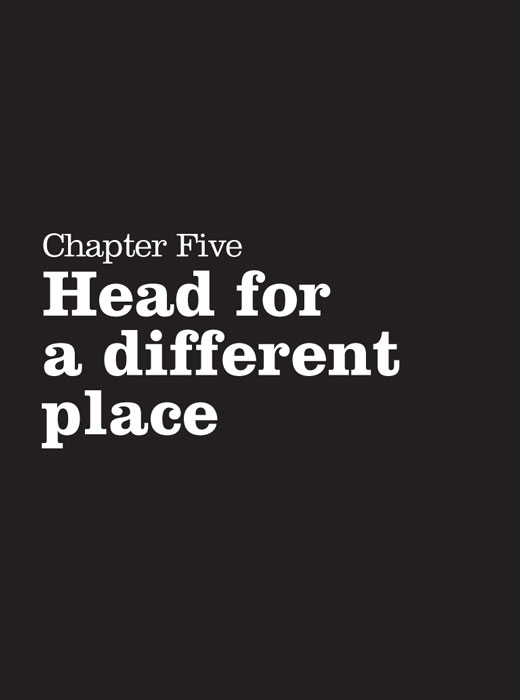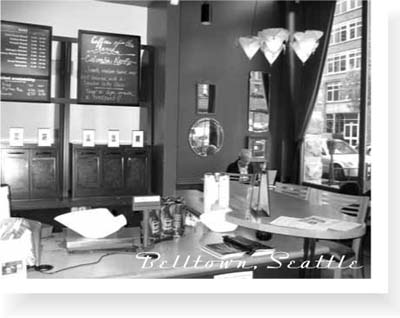The Starbucks Story (9 page)
Read The Starbucks Story Online
Authors: John Simmons

Orin Smith has a different personality and made a different impact. Now chief executive, he was originally brought in to look after the finances. His recruitment was an example of the Starbucks way. Presented with a succession of potential finance officers, Howard Schultz was beginning to despair because none of them “got it.” To be part of Starbucks, you need to identify and empathize with its culture. Contrary to the version portrayed by some opponents, this does not mean go for growth at all costs. Orin Smith brought a calm, measured approach to Starbucks at a time when it was becoming frantic. With rapid growth as part of the plan, he brought balance to his judgments, ensuring that a professional approach to systems, finance, logistics and operations kept the business steady.
The danger, and one feared by Howard Schultz, was that discipline might stifle creativity. Yet it soon became clear that Orin Smith’s discipline actually freed creative people (Howard Schultz among them) to use their abilities more effectively. Rather than fire-fighting when little things went wrong, the creative people in the company could concentrate on the issues that they could influence best. The front of store could look good and offer a great experience, but only because the back of store was functioning smoothly. Howard Schultz put it in this way: “In business, the front room is what the world sees: in our case, the coffee, the stores, the style, the brand. But the back room is where we win. The efficiency of the back room is really what’s made Starbucks a financial success.”
By the end of the period leading up to 1992, certain truths about the Starbucks brand were becoming established. They were forced into the open by decisions that had to be made. One of these decisions – a key one for any brand – was about franchising. Given the rate of expansion envisaged, franchising would have been an easy option. Indeed, many competitors went the franchising route and grew faster than Starbucks at this time. Starbucks resisted the attraction of franchising because it could not then ensure the quality of its product and service. Similarly, other decisions were taken: not to flavor coffee beans artificially; not to use chemicals; not to sell beans through supermarkets. The wrong decisions would have led to a loss of product quality that would have undermined the brand. The right decisions were taken: to keep pursuing the perfect cup of coffee, using the best beans and roasting them to the high standards Starbucks had always set.
Of these decisions, the rejection of franchising is perhaps the most significant for the Starbucks brand. It was one of many decisions, as I will explain in later chapters, where Starbucks leaned heavily on its understanding of its brand. With franchising, a business can grow more quickly and economically, but it sacrifices control. While retaining the external appearance of brand control through the application of visual identity, design formats and product sourcing, the company loses influence over the most important aspect of its brand: its people. It is a simple matter of who employs you: Starbucks or the franchisee? Which option will give you a more consistent brand?
Starbucks decided for Starbucks and its own people. It is a distinctive aspect of the brand that it controls just about every interaction with the outside world, as opposed to, say, even a brand like Coca-Cola, which relinquishes its control in the outlets where it is sold. You do not need to go to a Coca-Cola shop to buy Coca-Cola. But you do go to a Starbucks kiosk or store to buy a Starbucks coffee. This is an unusual degree of vertical integration, but it springs from a fear that one bad cup of coffee, one bad experience, can fatally undermine the brand. It calls for an extraordinary attention to quality control at every stage of the process, from growing to sourcing to roasting to brewing to serving.
Franchising was rejected because it would have weakened the Starbucks culture. Recruiting, training, communicating with people remain with Starbucks. But the purity of this approach could not be sustained indefinitely. In airports, for example, there is little option but to work through concessionaires. The first relationship was with Host Marriott in O’Hare airport, Chicago. Airports are natural, essential outlets for a brand like Starbucks: they bring the brand into contact with an international audience that then prepares the ground for international growth. Starbucks decided that it would operate through licensing in airports to achieve its development plans. So there was a retreat from control freakery towards a more balanced view, with the reins kept simultaneously loose and tight.
The scene was set for the next stage. Starbucks was about to embark on a period of accelerated expansion. To do so, it decided it needed to go public: to raise funds through the stock market rather than the provision of private capital. In arriving at that point, though, it had made some solid decisions that consolidated its own understanding of the Starbucks brand. And it had come to realize what it had perhaps always felt: that the brand was its greatest asset. It was the brand that allowed it, almost effortlessly it seemed, to roll out a program of store openings through the rest of America and, in time, through many other countries in the world.
What were the pillars of this brand? The mission statement and the six principles, certainly. The visual identity, and also the language of coffee that Starbucks was creating. But other things too, that seemed to come in clusters of three. First, the realization that if you give equal value to your product, your own people and your customers, you will have the foundations of a strong brand. Then, almost mirroring this in its structure, the bringing together of a tight business team, a core of three people with contrasting personalities but shared ambitions: Howard Schultz to supply the vision, Howard Behar to focus on the soul, and Orin Smith to provide the discipline. One final use of three: the all-important notion of the third place. Put all this together, and a world-beating brand was in the making.


When I was writing a previous book,
The invisible grail
, I decided to write one chapter while traveling from home to work, day after day, on the London Underground. In my mind, I had discovered a version of “the third place.” Starbucks has long considered that it provides the third place for its customers, a welcoming, accepting environment between home and work. Perhaps we all need a third place, in whatever form we find it, because it is a space for our minds to feel at ease. For previous generations it might have been the pub or the club; for people today it might be the bar or the gym. Perhaps more by luck than design, Starbucks found itself positioned as the perfect third place for the late twentieth century.
When Howard Schultz began to think about it, he was surprised that the original idea of Italian-style espresso bars had grown into a completely new paradigm. Clearly, the idea was now much bigger and more powerful than he had first imagined. A need was being fulfilled, and that need could not be expressed as “for people who love a great cup of coffee.” There was a deeper resonance at work here.
A number of people inside and outside Starbucks started to think about this. Ray Oldenburg, a Florida sociologist, wrote an influential book called
The great good place
. He described the need for informal public spaces where people can come together. Perhaps the European coffee houses had played such a role in the past; perhaps American barber shops had performed a similar function. The theory was based on the observation that urban life brings together great masses of people but often leaves individuals feeling isolated in the crowd.
To some extent, all successful brands are social. They bring people together and enable them to identify with others in a crowd without losing their sense of individuality. Some of the most iconic brands capture this duality of individual sociability: Guinness, for example. By drawing on your inner strength, you become all the more individual and true to your own personality while relating more successfully to all the other individuals around you. It is difficult, perhaps impossible, for brands to succeed by appealing purely to the loner. One of the most famous brand failures was a 1950s cigarette launched with heavy advertising and the slogan: “You’re never alone with a Strand.” People did not want a life where satisfaction was defined as being on your own with only a cigarette for company.
As the Starbucks brand has developed, the notion of the third place has become more entrenched. The music, the seating, the level of ambient noise allow you to feel included in the social place even when you are on your own. One of the conclusions drawn by an advertising agency pitching for Starbucks’ business in the early 1990s was that people go to Starbucks for a “social feeling.” This was despite the observation that the vast majority of Starbucks customers made no conversation or social interaction in the store. Come in, order, take away or sit down; there is no pressure to be sociable. Indeed, it is this absence of pressure that characterizes the third place and makes it a haven for many.

At the same time, many regard Starbucks as a gathering place where you can either collect your thoughts or meet your friends. If you are meeting friends, the third place takes on a more obviously social meaning. It also provides a setting that has just enough hint of the exotic to be different from home or work (the smell and the sight of coffee beans) and just enough likeness to be familiar (seats and tables that are slightly more or less comfortable than those at your work or home). It provides an environment that is socially “democratic,” where the male business executive sits in the same space as the mum taking a break from shopping, or students getting together after classes.
In 1992, Starbucks was realizing the traveling power of these ideas. It now knew that its offer worked in north-west America, Chicago and California. If there, why not elsewhere? The only thing that might stop it was a lack of resources to expand and the fear that, if it did not grow soon, the big boys in the coffee world would wake from their slumbers and put an end to the romance. The romance was still an integral part of the company, but there was now a perpetual tension between the functional efficiency required to run the business and the need to keep achieving big dreams that ensured the company had a soul. The decision to go public, to raise funds by floating the company on the New York stock exchange, was taken to meet both needs. Investment would help the business run better and, at the same time, enable it to achieve its ambitions on a national and international scale. These ambitions were to reinvent the coffee experience in America and to build a worldwide brand.
In many ways, the offer that Starbucks put to Wall Street was the opposite of what would normally appeal to the stockbrokers there. Howard Schultz was unwilling to compromise his belief that Starbucks was strong because it was built on deeply felt values. Yet he recognized that Wall Street does not put a value on values. Orin Smith provided a sober, dispassionate counterbalance to Howard’s emotional argument. The investment bankers appointed to place the listing did the rest. Even though technology companies were the flavor of the day and even though Starbucks was unknown in New York, the shares finished trading on their first day at $21.50, at least $4.50 above the target price. (The ipo price was $17.00.) The company was now worth $273 million, having been bought for $4 million five years earlier.
